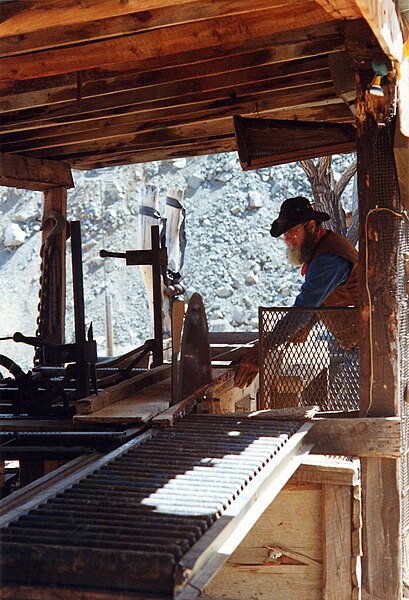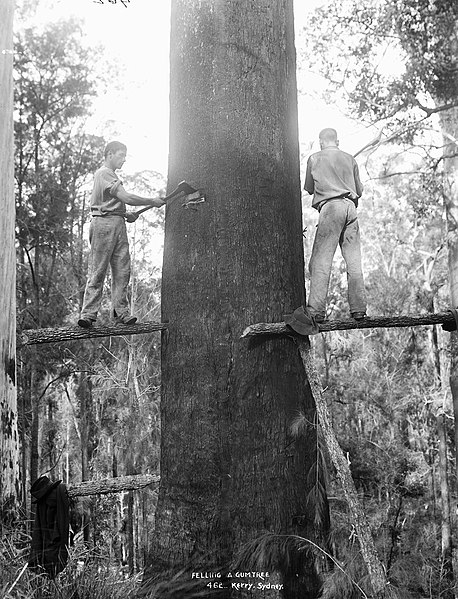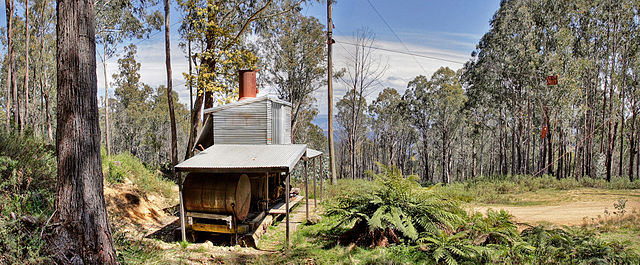A sawmill or lumber mill is a facility where logs are cut into lumber. Modern sawmills use a motorized saw to cut logs lengthwise to make long pieces, and crosswise to length depending on standard or custom sizes. The "portable" sawmill is simple to operate. The log lies flat on a steel bed, and the motorized saw cuts the log horizontally along the length of the bed, by the operator manually pushing the saw. The most basic kind of sawmill consists of a chainsaw and a customized jig, with similar horizontal operation.
Sawing logs into finished lumber with a basic "portable" sawmill
An American sawmill, c. 1920
Early 20th-century sawmill, maintained at Jerome, Arizona.
Illustration of a human-powered sawmill with a gang-saw, published in 1582.
Logging is the process of cutting, processing, and moving trees to a location for transport. It may include skidding, on-site processing, and loading of trees or logs onto trucks or skeleton cars. In forestry, the term logging is sometimes used narrowly to describe the logistics of moving wood from the stump to somewhere outside the forest, usually a sawmill or a lumber yard. In common usage, however, the term may cover a range of forestry or silviculture activities.
A Eucalyptus (Eucalyptus) being felled using springboards, c. 1884–1917, Australia
McGiffert Log Loader in East Texas, US, c. 1907
Lumber under snow in Montgomery, Colorado, 1880s
The Washington Iron Works Skidder in Nuniong is the only one of its kind in Australia, with donkey engine, spars, and cables still rigged for work.








